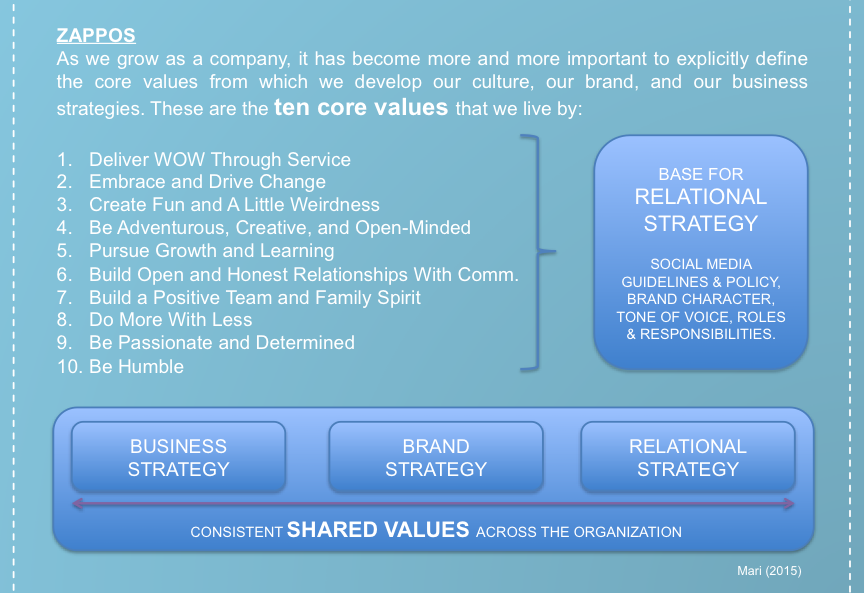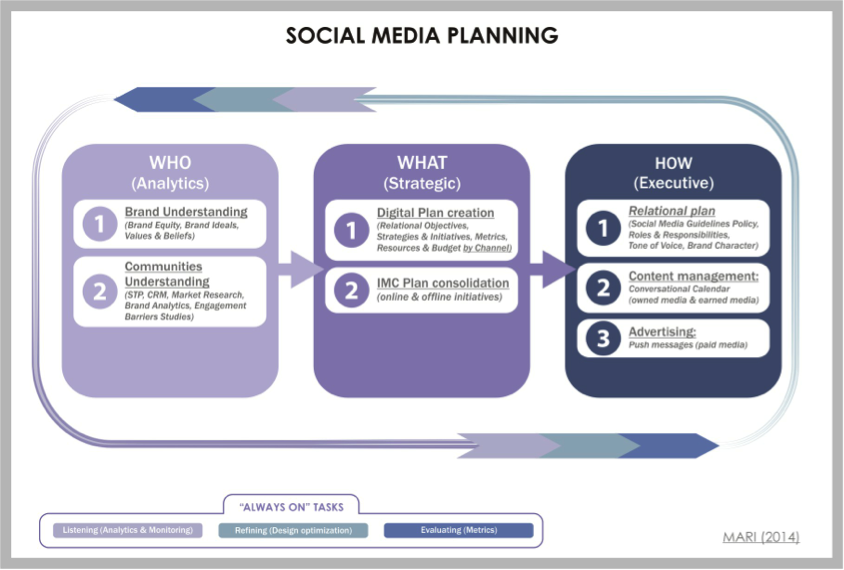Social Media ROI to measure relationship quality? No, thanks
One of the major challenges for companies is to guarantee continuity of the relationship development process. Since priorities in companies can change quickly, while the relationships takes time to evolve, it is not uncommon to observe a dramatic change in the online communication efforts of a brand, due to a lack of resources or interest by the top management.
In every company, people, priorities, and the availability of resources change so frequently that the plan of building strong long-term connections can fall at any point.
One way to prevent this is to include a consumer-centric strategy inside the overall company vision. Zappos.com, an online shoes and clothing shop acquired by Amazon, is a great example of such an approach. Zappos employees are encouraged to go above and beyond traditional customer service. For example, when a woman called Zappos to return a pair of boots for her husband because he had died in a car accident, she received a delivery of flowers, which the call center rep had billed to the company without even checking with her supervisor (Chafkin, 2009).
Zappos core values represents the basement for relational strategy (social media guidelines and policy, brand character, tone of voice, roles & responsibilities, etc.). They also directionally shape the definition of business strategy and brand strategy. Consistency of these core values across the organization are deem fundamental.
When a company decides to adopt an open approach to online conversations, it must consider that a certain level of consistency is needed over time. A general assumption coming from the managerial orientation of relationship marketing sees the relationships as something that can be imposed or withdrawn at will. Although there is a tendency for companies to believe and act as if this is true, there is enough evidence to suggest that whenever a relationship is dictated by the company, a process of consumer disaffection begins and negative business implications are expected.
I argue that when a process of openness from the company is initiated, it is difficult to stop it without consequences on the consumer’s perception of relationship quality.
Despite the growing interest in this area, managers are often required to take difficult calls that contrast with their regular communication-related decisions. On one hand, there is a desperate need to create communication assets or experiences that are sufficiently attractive for consumers to be shared and for media agents to be covered. On the other hand, during such a period of scarcity, there is a need to focus on the initiative’s return on investment (ROI) and on the process of prioritization and optimization of the company’s resources.
In evaluating the potentiality of launching a particular social media initiative, managers are increasingly confronted with questions related to the media coverage and audience reach. Through the estimated PR effect generated by the initiative in owned, earned, and paid media, managers try to support the need of relational-based campaigns during the difficult task of showing top management the potential returns, at least in terms of media coverage and audience reach.
Despite the market evidence that social initiatives are absolutely necessary to create a sustainable competitive advantage, which is greatly enhanced when brand community attachment is generated, the lack of data related to the initiative’s ROI automatically de-prioritizes this powerful tool in favor of more measurable actions. Even in the rare case that a company collaborates with an agency that plans a social initiative perfectly in line with business objective, strategies, and messages, and is evaluated with proper metrics, its “PRability” effect is likely to fall over time as the idea becomes obsolete and is executed by other companies and in other industries/geographical areas.
Whenever a social media plan is evaluated as a standalone initiative – that is, not considered in a process aimed at developing relationships with strategic customers inside a so-called “consumer journey” – this tends tohave a limited effect on the brand-consumer relationship and on the long-term business impact overall.
This myopic view of social media has led companies to use “Social Media” platforms, not for their “social” characteristics but as PR machine tools to distribute press releases without any relationship-based objective.
It is only after several steps in the social media environment that global brands have understood how much it costs to simultaneously manage thousands (if not millions) of relationships with consumers and prospects. Today, the need to create cost efficiencies is pushing those brands to reduce the number of fan pages or other corporate accounts.
Alex Mari - Founder & Creative Director of BrandMate - www.brandmate.it




Comments